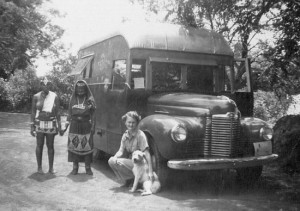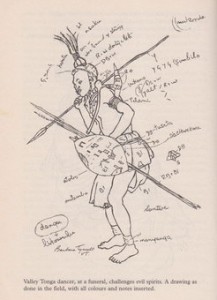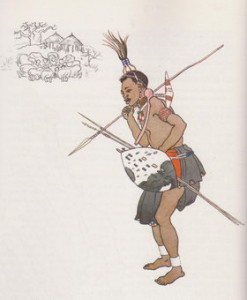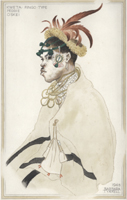On the Internet there is only one thing that really matters – prominence. It is the nexus of all factors that drive the ever-expanding cyberspace. In this world, the attention span of every visitor is measured in seconds, and the amount of traffic to a specific website measured with scientific precision.
It is, therefore, not surprising (and a cause for concern) that trade marks are set to become a casualty in the battle for online supremacy. The fact that trade mark infringement on the Internet is a present danger is not new. However, few realise the extent to which the domain name system is open to abuse by those undeterred by the provisions of the Trade Marks Act.
The reason for this is alarmingly simple: the domain name system (DNS) allows the registration of domain names (website addresses) regardless of any intellectual property rights. It is therefore possible to obtain a domain name that contains the registered trade mark of another for whatever purpose. In addition, the DNS is largely subject to arbitration regulations that, in many cases, afford less protection than the Act.
In the game of numbers, the Internet packs the biggest punch and trade mark rights are a favourite target
In 2008 ICANN (the international regulator of the domain name system) announced the creation of a new set of domain names specifically aimed at brands, institutions and organisations. These new registrations will create a set of domain names not followed by the traditional .com, .co, .net et al suffixes, but in stead allow anyone to register any word as a domain name.
Applications for these new domain names have just closed, and one may well ask: is there really any cause for concern?
The answer, from an intellectual property rights perspective, is YES. Everything about the Internet is about numbers, and it is a game with only one rule: the larger number wins. To succeed in online business, your website requires visitors. The more visitors you attract, the more business you will do (or refer at a fee). The more business you do, the more revenue you generate. The more revenue you generate, the higher the advertising fee you can charge for space on your website.
As a result, websites are forever engaged in a tussle for higher listings on search engine results. Consequently, many are prepared to register (or purchase) domain names that contain the trade mark of competing (or even unrelated) enterprises in the (realistic) hope that this would divert visitors to their website. In addition, few are deterred by the outcome of an arbitration hearing at some future date or the judgment in an (unlikely) civil suit for trade mark infringement. It is only the number of visitors today that matters.
Traffic numbers
The days of a simple hits counter (indicating the total amount of page views) is long gone, and privacy considerations have yet to realise how much information is being collected about every website and individual page visited. By including a simple series of code with the programming of a site the Webmaster is able to track, in astounding detail, the particulars of every visitor. This includes the country, region, city, network, language, operating system, browser program, Internet service provider and screen resolution. In addition, very little effort on the part of the web programmer is required to review the visitor’s engagement with a website (and every of its component pages, buttons, pictures, social media features or links) historically and in real time.
And among these details, the most important statistic is the traffic source. This indicates the route each visitor followed to arrive at a specific website (or landing page of that site). This number consists of two categories; direct visits (where the individual is connected to the site by typing the address into the browser program) and linked visits (where the traffic is relayed through another website).
In both cases, the specific website address is of paramount concern, and the higher the number the better.
At the nuts and bolts level, Internet traffic is directed with the aid of IP (Internet Protocol) addresses expressed as a series of unique numbers (eg: 173.194.41.166) that is linked to a specific computer where a website is hosted. Each IP address in turn is linked to a unique domain name (eg. www.maties.com) that is easier to communicate and simpler to remember.
While social media has undoubtedly sounded the death toll of the searchable web, most internet users still rely on search engines to find a specific website. As a result, Webmasters concern themselves with the number of linked visits from search engines and, of course, the position of their website in the search results.
In this race to the top, possessing the right domain name provides a considerable lead, and the more variations of a specific domain name you own the greater the advantage.
However, the algorithms applied by a search engine when generating its results are far more complicated and depends on a multitude of variables including; the established number of prior visitors to every site listed, its geographic location, age, number of social media hits, language and actual contents.
For this reason, the number of direct visits to a website is just as important and often preferred in excess of linked visits.
Because traffic numbers are directly linked to the advertising revenue of each commercial website and responsible for the market penetration (and success) of new products or services, developers spend a great amount of time and money on search engine optimisation (SEO) and social media integration to deliver more visitors to their website.
Although not yet tested, it would be an interesting (and certainly successful) method to establish the reputation of foreign well-known trade marks in a specific jurisdiction where the mark is not registered with the aid of website traffic statistics.
Domain Names vs Trade Marks
The domain name system (DNS) is managed globally by ICANN and any number of authorised domain name registrars (both internationally and locally) depending on the type of domain registered.
The only requirement for the registration of a domain name is that it should be unique. The registrar is therefore not concerned with any prior use, reputation, registered trade mark or any other intellectual property right that may exist in respect of the domain (or any part thereof) for which registration is sought. A domain name is simply allocated on a first-past-the-post basis.
If you do not protect your trade marks before someone else registers it as a domain name, the consequences may be severe
In addition, the DNS does not provide for a process of opposition to registration or any pre-registration review. Therefore, it will only remove or transfer a registered domain name upon a court order or the outcome of an ADR hearing.
This position, of course, leaves it open to any individual to register any domain name in furtherance of its own traffic rating tactics, regardless of trade mark considerations.
Indeed, many have registered misspelled trade marks as domain names to direct traffic to their own (competing) website, or registered derivatives of famous marks as part of their domain names to increase their search engine ratings. In addition, the DNS does not prohibit the registration of pejorative or griping domain names (eg: helkom.co.za; sickfacebook.com; audi-sucks.com) and will only consider certain registrations as abusive or offensive under limited circumstances (of which trade mark infringement is only one factor).
Unfortunately, ICANN has recently increased the risk of such registrations with the announcement of a new open-ended, sponsored range of generic top-level domain names available for registration. This will allow brands, industries, institutions or groups to register a single domain (eg: .woolworths, .sony, .nike) and then manage all second level domain names (eg: .food.woolworths) at its discretion. At the close of application in April 2012, more than 800 applicants have filed for new individual domain names.
In addition, the new gTLD Program also admits the very first Internationalised Domain Names (IDN) that may contain any of the non-Latin alphabet characters or numerals. The IDN is based on the range of Unicode characters and includes the entire ASCII character map. It is therefore possible to register a domain name in any language or script using any alphabet (or multiple versions of the same domain name using a different alphabet), which is likely to lead to widespread potential trade mark infringement.
Actionable?
Business is about money, and the Internet is big business. Therefore, to secure the fundamental role of trade marks in business the Internet is forcing us to adapt to a new kind of match, where the courts are shunned in favour of fides driven online fora.
When faced with the domain name question, the traditional remedies for trade mark infringement remain (alarmingly) unaffected. In addition, where domain names are concerned an ADR (alternative dispute resolution) system is usually preferred. In the case of gTL domains the WIPO Arbitration and Mediation Centre is considered the best alternative to a trade mark infringement suit, while local ccTL (.za) domain disputes are settled according to the ADR Regulations promulgated in terms of s 69 of the ECT Act.
Although there is no reason why a registered domain name may not be challenged based on the provision of the Trade Marks Act, the interpretation of the UDRP rules applicable to domain names will in most cases afford the trade mark proprietor a more suitable remedy.
Among others, these include:
- The fact that the contents of the website (linked to the infringing domain name) is irrelevant to a finding of confusing similarity between the mark and the domain name. The addition of generic or descriptive (or even derogatory words) to the mark contained in the domain name is disposed of in a manner analogous to that of trade mark litigation.
- The determination of rights to the mark is conducted on a prima facie basis. That means the possession of a registered mark anywhere constitutes a sufficient right provided that a sufficient level of distinctiveness, renown and/or prior use of the mark has been reached.
- The nature of the goods or services offered by the website is irrelevant, as is the class of registration of the mark. A case of bona fides concurrent use is therefore more difficult to make.
- Unregistered marks and personal names may also form the basis of a complaint.
These factors are applicable to existing and new domain names. In addition, ICANN’s new gTLD program includes a series of trade mark-orientated provisions that may prevent abuse or infringement, provided that the trade mark proprietor is alarmed in time.
This includes (for the first time in the history of the DNS) a form of review.
Regarding the new brand-based domains the new system allows for an objection process through which a rights holder (such as a trade mark proprietor) may oppose the registration of a proposed domain name. This of course means that the application-to-registration process for new gTL domains will include a longer waiting period and a more prominent public record of applications. The first round of applications closed on 12 April 2012, and publication of the register is due any day.
In addition, applications under the new program had to be accompanied by a rights management policy regarding the further (second tier) registrations of awarded domain names to avoid potential trade mark infringement.
Finally, the program obliges all successful registrants to incorporate measures that subject their domain name and all second level domain names to ICANN’s UDRP (Uniform Domain Name Dispute Resolution Policy).
All interested parties now have the opportunity to lodge comments about a proposed mark (or the new program in general) with ICANN before 30 June 2012 for consideration and/or file an objection to a domain with WIPO within 7 months.
A battle plan
The outcome of trade mark litigation based on a domain name is notoriously difficult to predict. Similarly, post-registration domain name dispute resolution is still a new (and far from exact) exercise.
In stead, many trade mark proprietors elect to make an offer to purchase the (potentially) infringing domain name from the registered owner. However, this practice has given rise to an enterprising occurrence – the cybersquatter.
This entails the widespread registration of domains that include the trade mark(s) of deep-pocketed proprietors that are likely to make an offer to purchase the domain.
The registration of a domain name without the intention to use it or in an effort to obstruct the business of another is considered a mala fides registration and therefore a ground for its removal from the register. However, these practices remain widespread and more frequently linked to international sports and cultural events, or famous brands.
What is to be done to protect the exploitation of a trade mark in the domain name register? Clearly, in this numbers game the trade mark proprietor has only one chance to win: be the first.
For those who were savvy enough to register their trade mark-based domains widely and applied for the new gTLD’s, nothing more than the usual monitoring of domain names is necessary. Unfortunately, for those proprietors caught napping, the only available course of action would be to investigate the new gTLD register and bring an application to WIPO as soon as possible.
And if you do nothing? Be prepared to find your website (and your business) on page 25 of Google’s search results.
Cobus Jooste







